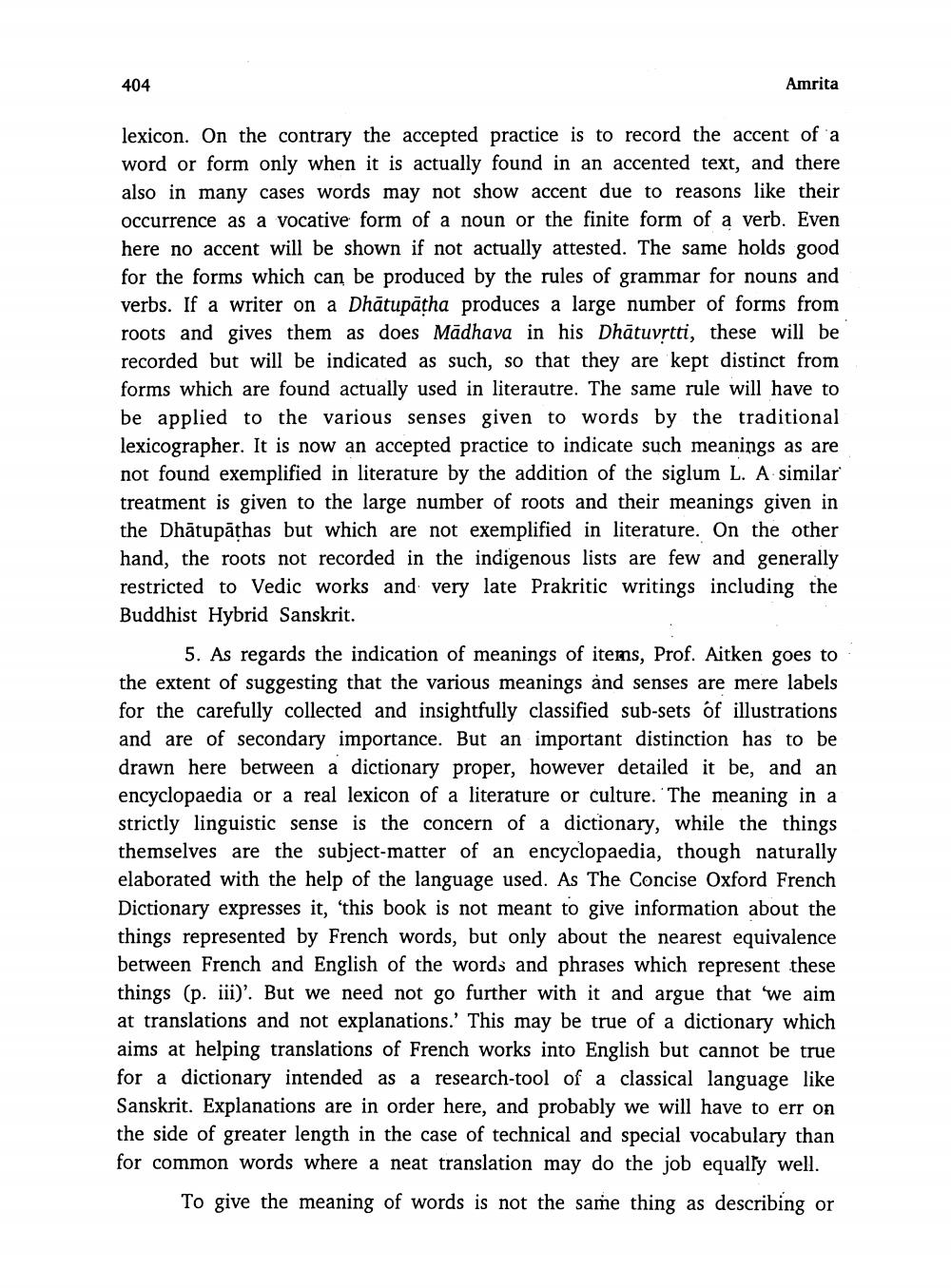________________
404
Amrita
lexicon. On the contrary the accepted practice is to record the accent of a word or form only when it is actually found in an accented text, and there also in many cases words may not show accent due to reasons like their occurrence as a vocative form of a noun or the finite form of a verb. Even here no accent will be shown if not actually attested. The same holds good for the forms which can be produced by the rules of grammar for nouns and verbs. If a writer on a Dhatupatha produces a large number of forms from roots and gives them as does Madhava in his Dhätuvṛtti, these will be recorded but will be indicated as such, so that they are kept distinct from forms which are found actually used in literautre. The same rule will have to be applied to the various senses given to words by the traditional lexicographer. It is now an accepted practice to indicate such meanings as are not found exemplified in literature by the addition of the siglum L. A similar treatment is given to the large number of roots and their meanings given in the Dhatupāṭhas but which are not exemplified in literature. On the other hand, the roots not recorded in the indigenous lists are few and generally restricted to Vedic works and very late Prakritic writings including the Buddhist Hybrid Sanskrit.
5. As regards the indication of meanings of items, Prof. Aitken goes to the extent of suggesting that the various meanings and senses are mere labels for the carefully collected and insightfully classified sub-sets of illustrations and are of secondary importance. But an important distinction has to be drawn here between a dictionary proper, however detailed it be, and an encyclopaedia or a real lexicon of a literature or culture. The meaning in a strictly linguistic sense is the concern of a dictionary, while the things themselves are the subject-matter of an encyclopaedia, though naturally elaborated with the help of the language used. As The Concise Oxford French Dictionary expresses it, this book is not meant to give information about the things represented by French words, but only about the nearest equivalence between French and English of the words and phrases which represent these things (p. iii)'. But we need not go further with it and argue that 'we aim at translations and not explanations.' This may be true of a dictionary which aims at helping translations of French works into English but cannot be true for a dictionary intended as a research-tool of a classical language like Sanskrit. Explanations are in order here, and probably we will have to err on the side of greater length in the case of technical and special vocabulary than for common words where a neat translation may do the job equally well.
To give the meaning of words is not the same thing as describing or




